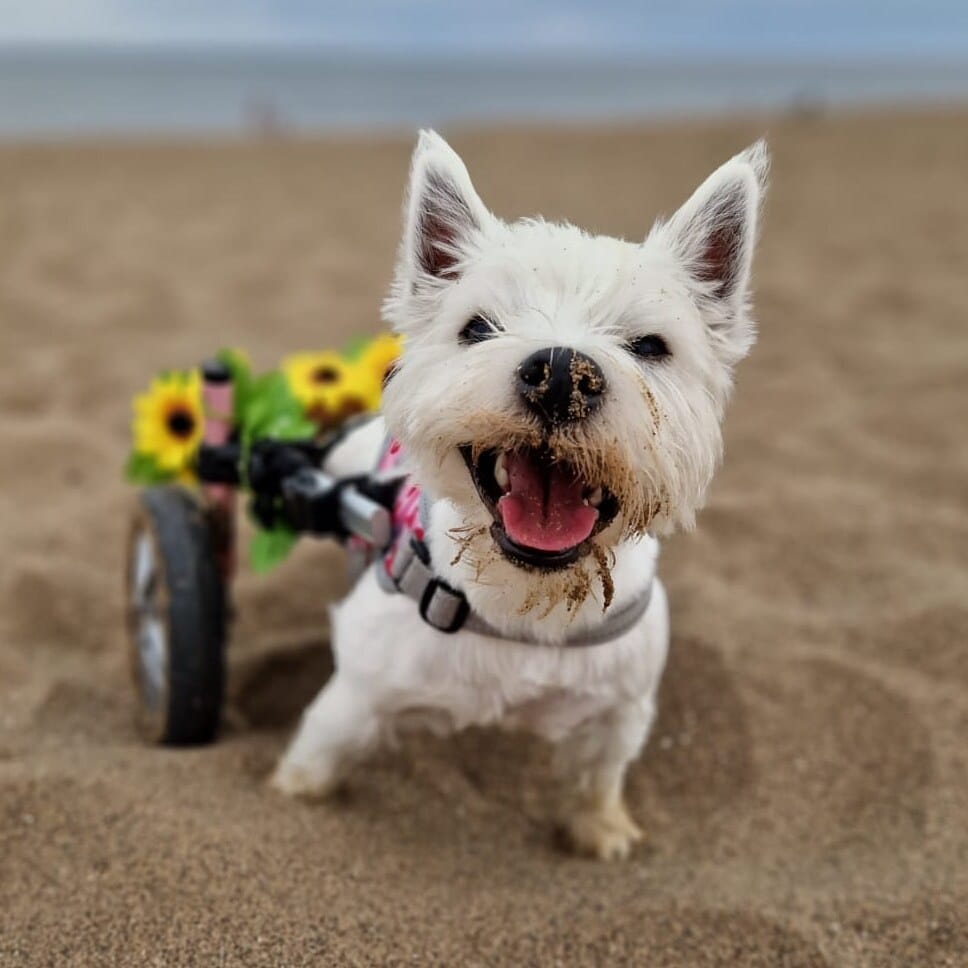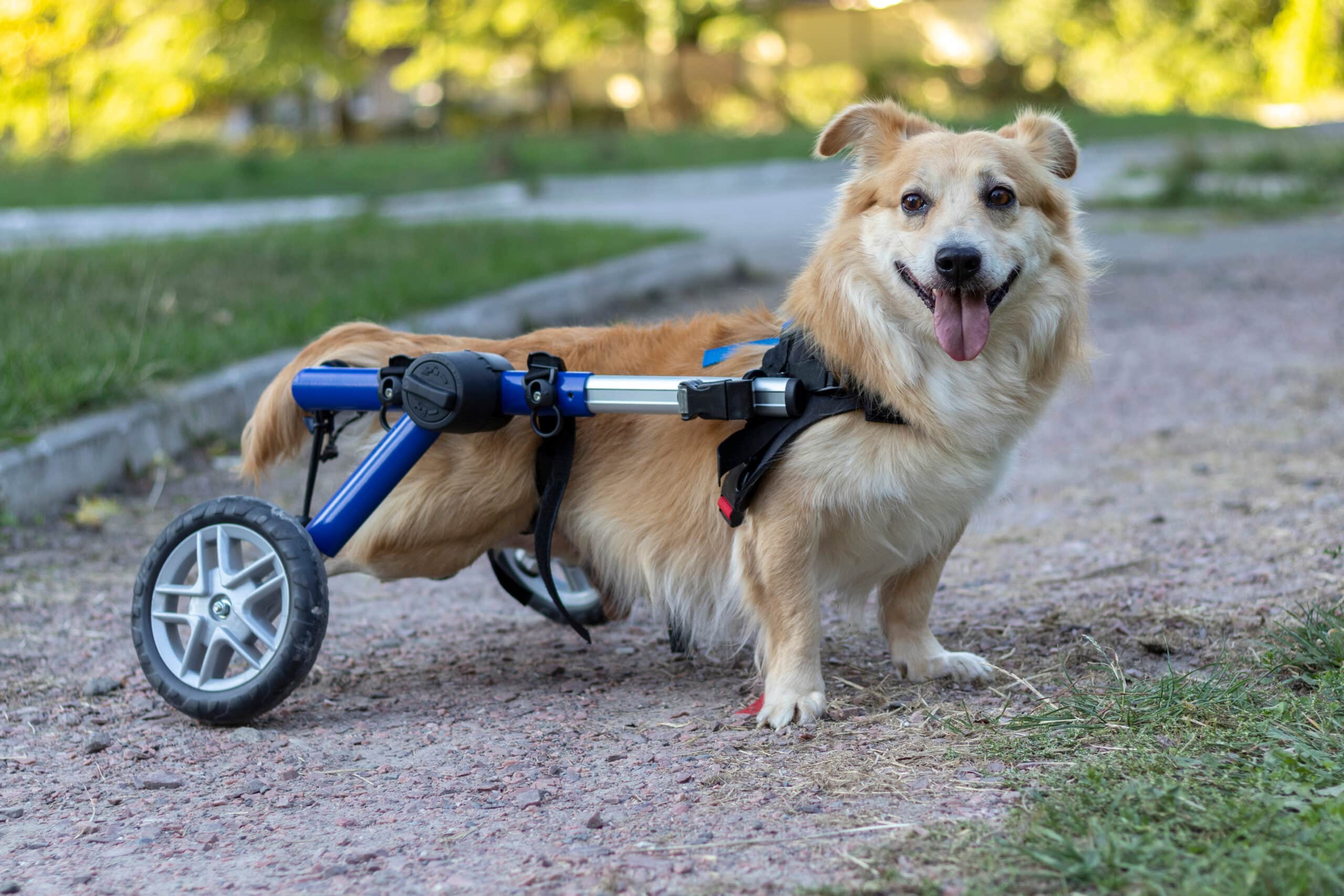Raising Awareness of Disabilities in Animals: Celebrating Their Resilience and Overcoming Challenges
When we talk about disabilities, our first thought often goes to humans. However, it's essential to recognize that animals can also face physical and cognitive challenges. Just like people, disabled animals can lead fulfilling lives and serve as inspiring examples of resilience.
In this blog, we'll explore the world of disabilities in animals, shed light on their struggles, and celebrate their ability to adapt and thrive despite their limitations.
Types of Disabilities in Animals
Animals, like humans, can experience a wide range of disabilities. Some common types include:
- Physical Disabilities: These include conditions like amputations, paralysis, or deformities due to birth defects, accidents, or illnesses. For example, an animal may lose a limb in a trap or suffer from spinal injuries after a car accident.
- Sensory Disabilities: Animals can suffer from blindness, deafness, or impaired senses, which can significantly impact their daily lives and communication. Blindness might result from congenital issues or ageing, while deafness could be caused by infections or injuries.
- Neurological Disabilities: Similar to humans, animals can experience neurological issues, such as epilepsy or cognitive impairments, affecting their motor skills or cognitive functions. Seizures, for instance, can be a challenging condition to manage for both the animal and their caregivers.
Causes of Disabilities in Animals
Disabilities in animals can arise from various factors, including genetics, accidents, infections, injuries, or old age. Some animals are born with congenital disabilities, while others acquire them later in life due to accidents or illnesses.
Irrespective of the cause, animals with disabilities deserve our attention, compassion, and support.
Genetic disabilities in animals may be inherited or result from breeding practices that emphasize appearance over health. For example, certain dog breeds are prone to hip dysplasia, a condition that can lead to significant mobility issues.
Accidents, such as vehicular collisions or falls from heights, can result in traumatic injuries that leave animals disabled. Similarly, infections like meningitis can lead to neurological impairments in animals, affecting their mobility and overall well-being.
Challenges Faced by Disabled Animals
Living with a disability can pose numerous challenges for animals. They may struggle to perform basic activities like walking, eating, grooming, or finding food. In the wild, disabled animals may face difficulties in hunting or escaping predators, making survival an uphill battle. In domestic settings, they may require special care and accommodations to ensure their well-being.
Wild animals with disabilities often face severe challenges, as nature can be unforgiving. Their ability to survive largely depends on their resourcefulness and the support of their social group. While some may adapt and thrive, others may have a harder time, facing a diminished quality of life.
In domestic settings, animals with disabilities often rely on their human caregivers for support. This can range from administering medications, assisting with mobility, providing specialized diets, and creating a safe and accessible environment.
Adapting to Disabilities
One remarkable aspect of animals is their innate ability to adapt to challenging circumstances.
Disabled animals often display incredible resilience and creativity in finding ways to compensate for their limitations. For instance, a blind dog might rely more on its sense of smell and hearing, or a three-legged cat can still climb and explore its environment with impressive agility.
In the wild, animals with disabilities may develop unique strategies to survive. For instance, a bird with a damaged wing might build its nest closer to the ground to reduce the risk of falling.
Domesticated animals with disabilities can also amaze us with their adaptability. They often learn to navigate their environment effectively, memorize the layout of their surroundings, and form strong bonds with their human caregivers.
Human-Animal Bond: Assisting Disabled Animals
Humans play a crucial role in supporting disabled animals. Pet owners, veterinarians, and animal welfare organizations contribute to improving the lives of these animals in various ways:
- Accessibility and Accommodations: Modifying living spaces and environments to suit the needs of disabled animals, such as providing ramps for mobility-impaired pets or tactile cues for visually impaired animals. These modifications empower animals to move and explore freely, minimizing the limitations of their disabilities.
- Assistive Devices: Innovative prosthetics, wheelchairs, or braces can help animals regain some mobility and independence. Advancements in veterinary medicine have made it possible for animals to benefit from custom-made devices that improve their quality of life significantly.
- Emotional Support: Like humans, animals can also experience emotional challenges. Offering love, patience, and understanding can have a positive impact on their well-being. The emotional bond between animals and their caregivers is incredibly strong, and the support provided by humans can help them overcome anxiety and stress related to their disabilities.
- Adoption and Advocacy: Encouraging the adoption of disabled animals and raising awareness about their unique needs is crucial to combat stigma and promote inclusive attitudes. Many disabled animals end up in shelters, and they often require a bit more care and understanding. By adopting these animals, we provide them with a loving home and show others the joy and fulfilment they can bring to our lives.

Assistive Devices for Disabled Pets
Advancements in veterinary medicine and technology have led to the development of various assistive devices that cater specifically to the needs of disabled animals.
These innovative solutions aim to improve the quality of life for pets with physical disabilities, enabling them to move more freely, regain independence, and enjoy a fulfilling life. Here are some notable assistive technologies for disabled pets:
Prosthetics
Just like humans, animals can benefit from prosthetic limbs.
Whether they've lost a leg due to an accident or were born without one, prosthetics can provide them with the support needed to move and explore their environment comfortably.
With the help of 3D printing technology, vets can create custom-fit prosthetics that perfectly suit the animal's unique anatomy. Prosthetics are commonly used for dogs and cats, allowing them to walk, run, and play despite their physical limitations.
Wheelchairs
Pet wheelchairs, also known as "carts" or "dog wheelchairs," are a popular assistive technology for animals with mobility challenges.
Designed for animals with hind or all four limbs affected, these wheelchairs offer support and mobility to pets with conditions such as paralysis, degenerative diseases, or spinal injuries.
Wheelchairs are adjustable and made of lightweight materials, ensuring that pets can move around comfortably without feeling restricted.
Our fundraising campaign for the Pumpkin and Friends charity aims to raise money to help fund five wheelchairs for dogs.
Orthotic Devices
Orthotic devices are assistive tools that help stabilize and support an animal's limbs. They are often used to aid pets with injuries, deformities, or neurological conditions affecting their posture and gait.
An orthotic brace can provide additional support to a weakened limb or correct a misalignment, allowing the pet to move more naturally and comfortably.
Mobility Harnesses and Slings
Mobility harnesses and slings are excellent options for pets that require assistance with standing, walking, or climbing stairs.
These harnesses typically have handles or straps that allow pet owners to support their disabled companions during daily activities. Mobility aids can be particularly helpful for larger animals or those recovering from surgery or injuries.
Rear-Leg Sling Support
Rear-leg sling support systems are specialized harnesses that assist animals with hind limb weakness or paralysis. The sling wraps around the rear end of the pet, providing lift and support to their back legs, thus enabling them to move around more comfortably.
These slings can be useful during rehabilitation or for pets with degenerative conditions.
Prosthetic Limbs for Amputee Animals
For animals that have lost a limb due to trauma or surgical amputation, prosthetic limbs can make a world of difference. Prosthetics are custom-made to suit the individual animal's size, weight, and movement patterns.
They provide pets with enhanced mobility and stability, allowing them to engage in various activities and maintain their natural balance.
Sensory Aids
Assistive technologies aren't limited to physical disabilities; they can also aid pets with sensory impairments. For instance, visually impaired animals can benefit from products that emit sounds or vibrations to help them navigate their surroundings better.
Additionally, hearing-impaired pets may respond positively to visual cues and hand signals.
Adaptive Pet Furniture
Adaptive pet furniture is designed to cater to the unique needs of disabled animals. For instance, ramps and stairs can help animals with mobility challenges access furniture, beds, or vehicles.
Elevated feeding stations can benefit pets with neck or back issues, making it easier for them to eat comfortably.
Environmental Modifications
In addition to specialized equipment, simple environmental modifications can make a significant difference in the lives of disabled pets. Removing potential hazards, providing soft and comfortable bedding, and creating easily accessible litter boxes are some examples of ways to enhance their daily living.
Conclusion
Raising awareness of disabilities in animals is essential to breaking down stereotypes and ensuring they receive the love and care they deserve.
Like all living beings, animals should be treated with empathy and compassion, irrespective of their abilities. By celebrating their resilience and highlighting their unique journeys, we can foster a more inclusive and compassionate world for all creatures, great and small.
Let's remember that disability does not define an animal; it merely adds to their uniqueness and strength.
Embracing and supporting animals with disabilities not only changes their lives but also enriches ours as we learn valuable lessons about determination, adaptability, and the beauty of diversity.
Assistive devices have revolutionized the way we care for disabled pets, enabling them to lead happier and more fulfilling lives. These devices and solutions not only improve their mobility and independence but also strengthen the bond between pets and their human caregivers.
By embracing and investing in assistive technologies for disabled animals, we can create a more inclusive and compassionate world for all creatures, celebrating their resilience and embracing the beauty of diversity.
Help us raise money to provide more pets with assistive wheelchairs that will help them to live a full and happy life.

